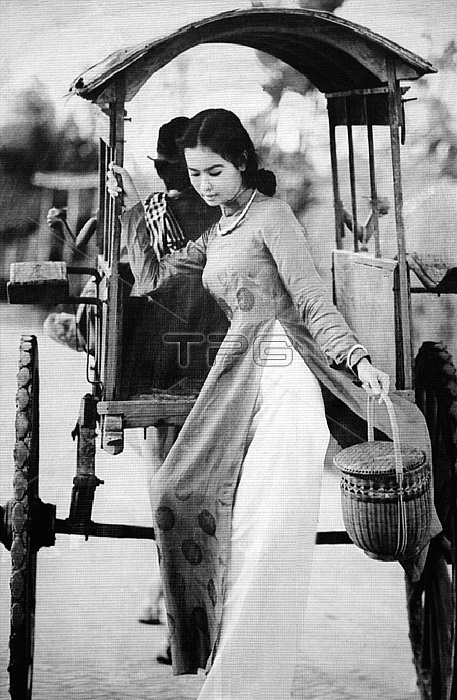
The ao dai (Vietnamese: 獺o d?i) is a Vietnamese national costume, now most commonly for women. In its current form, it is a tight-fitting silk tunic worn over pantaloons. The word is pronounced ow-zye in the north and ow-yai in the south, and translates as 'long dress'.
The name 獺o d?i was originally applied to the dress worn at the court of the Nguy廙?? Lords at Hu廕?in the 18th century. This outfit evolved into the 獺o ng觼 th璽n, a five-paneled aristocratic gown worn in the 19th and early 20th centuries. Inspired by Paris fashions, Nguy廙?? C獺t T??廙??g and other artists associated with Hanoi University redesigned the ng觼 th璽n as a modern dress in the 1920s and 1930s.
The updated look was promoted by the artists and magazines of T廙?L廙帷 v?n ?o?n (Self-Reliant Literary Group) as a national costume for the modern era. In the 1950s, Saigon designers tightened the fit to produce the version worn by Vietnamese women today. The dress was extremely popular in South Vietnam in the 1960s and early 1970s, frowned upon as frivolous and borgeois in the North between 1952 and 1986, but is today increasingly popular nationwide, having become once again a symbol of Vietnamese nationalism and Vietnamese female beauty.
| px | px | dpi | = | cm | x | cm | = | MB |
Details
Creative#:
TPG32689314
Source:
達志影像
Authorization Type:
RF
Release Information:
須由TPG 完整授權
Model Release:
No
Property Release:
No
Right to Privacy:
No
Same folder images:

 Loading
Loading